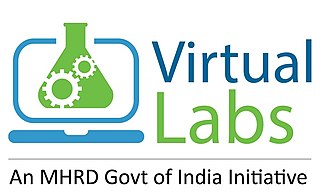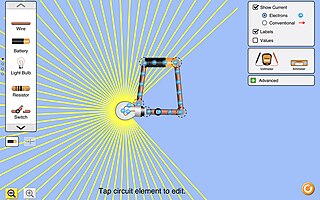
Indian Institute of Technology Kharagpur is a public institute of technology established by the Government of India in Kharagpur, West Bengal, India. Established in 1951, the institute is the first of the IITs to be established and is recognised as an Institute of National Importance. In 2019 it was awarded the status of Institute of Eminence by the Government of India.

Indian Institute of Technology Roorkee is a technical university located in Roorkee, Uttarakhand, India. It is the oldest engineering institution in India, and was founded as the College of Civil Engineering in British India in 1847 by the Lieutenant-Governor of the North-Western Provinces, James Thomason, in order to train officers and surveyors employed in the construction of the Ganges Canal. In 1854, after the completion of the canal and Thomason's death, it was renamed the Thomason College of Civil Engineering by Proby Cautley, the designer and projector of the canal. It was renamed University of Roorkee in 1949, and again renamed IIT Roorkee in 2001. The institution has 22 academic departments covering Engineering, Applied Sciences, Humanities & Social Sciences and Management programs with an emphasis on scientific and technological education and research. IIT Roorkee is ranked among the most prestigious academic institutions in India.

Joint Entrance Examination – Advanced (JEE-Advanced), is an academic examination held annually in India. It is organised by one of the seven zonal IITs under the guidance of the Joint Admission Board (JAB) on a round-robin rotation pattern for the qualifying candidates of the JEE-Main. It used to be the sole prerequisite for admission to the Indian Institutes of Technology bachelor's programs before the introduction of UCEED, Online B.S. and Olympiad entries, but seats through these new mediums are very low or difficult to complete the course.

Rajiv Gandhi School of Intellectual Property Law, IIT Kharagpur is a law school located in Kharagpur, West Bengal, India. An academic unit of Indian Institute of Technology Kharagpur, it is the first law school to be established in an Indian Institute of Technology (IIT). It was set up in collaboration with the George Washington University Law School, Washington DC and is the only law school within the IIT system. It is also the first law school in India imparting full-time Intellectual Property education along with other regular courses prescribed by the Bar Council of India.

Indian Institute of Technology Madras is a public technical university located in Chennai, Tamil Nadu, India. It is selected as one of the 8 public Institutes of Eminence of India. As one of the Indian Institutes of Technology (IITs), it is recognized as an Institute of National Importance. IIT Madras is ranked among the most prestigious academic institutions in India.
Kizhakeyil Lukose Sebastian is a professor of chemistry at the department of Inorganic and Physical Chemistry of Indian Institute of Technology, Palakkad, India. Prior to becoming a professor at IIT Palakkad, he was a professor of chemistry at the department of Inorganic and Physical Chemistry at Indian Institute of Science, Bangalore, for about 20 years.

The School of Medical Science and Technology (SMST) is an educational and research institute affiliated to the Indian Institute of Technology, Kharagpur, India. Founded in 2001, the School of Medical Science and Technology brings together doctors, scientists and engineers to work collaboratively on projects for better healthcare.

Indian Institute of Technology Bhubaneswar is a public technical university established by the government of India in 2008, located at Bhubaneswar, Odisha, India.
The Indian Institutes of Technology (IITs) are Centrally Funded Technical Institutes located across India. They are under the ownership of the Ministry of Education of the Government of India. They are governed by the Institutes of Technology Act, 1961, declaring them as Institutes of National Importance and laying down their powers, duties, and framework for governance as the country's premier institutions in the field of technology. The act currently lists twenty-three IITs. Each IIT has autonomy and is linked to others through a common council called the IIT Council, which oversees their administration. The Minister of Education of India is the ex officio Chairperson of the IIT Council.
Entrepreneurship Cell, IIT Kharagpur (E-Cell) is a non-profit student's organization dedicated to promoting the spirit of entrepreneurship among students throughout India. Established in 2006 under the aegis of STEP, IIT Kharagpur, E-Cell has since been involved in more than 70 startup companies in the initial stages of their existence. It is a student body under Rajendra Mishra School of Engineering Entrepreneurship (RMSOEE), IIT Kharagpur and has taken up various initiatives to promote new ventures by students of IIT Kharagpur and students across the country.

Virtual Labs is a project initiated by the Ministry of Education, Government of India, under the National Mission on Education through Information and Communication Technology. The project aims to provide remote access to Laboratories in various disciplines of Science and Engineering for students at all levels from undergraduate to research.

PhET Interactive Simulations, a project at the University of Colorado Boulder, is a non-profit open educational resource project that creates and hosts explorable explanations. It was founded in 2002 by Nobel Laureate Carl Wieman. PhET began with Wieman's vision to improve the way science is taught and learned. Their stated mission is "To advance science and math literacy and education worldwide through free interactive simulations."

Vinod Gupta school of Management, IIT Kharagpur is a public graduate business school located in Kharagpur, West Bengal, India. An academic unit of Indian Institute of Technology Kharagpur, it is the first business school to be established in an Indian Institute of Technology (IIT).

Bhrigu Nath Singh, also known as B.N. Singh, is an Indian engineering scientist. He is a distinguished professor and Institute's first Dean of Human Resources, Indian Institute of Technology Kharagpur. Chair of the ICTACEM and former Head of Department Aerospace Engineering, IIT Kharagpur.
Meera Chandrasekhar, is a Curators’ Teaching of Physics and Astronomy at the University of Missouri, United States. She is the recipient of the 2014 Baylor University's Robert Foster Cherry Award for Great Teaching. Her research focuses on optical spectroscopy of semiconductors and superconductors under pressure. Meera has also developed several hands-on physics programs for students in grades 5–12, and summer institutes for K-12 teachers.

Kasturi Lal Chopra was an Indian materials physicist and a former director of the Indian Institute of Technology, Kharagpur. He was the founder of the Thin Film Laboratory at Indian Institute of Technology, Delhi and the Microscience Laboratory at IIT, Kharagpur and held several US and Indian patents for his research findings. Author of a number of books on thin film technology, he was a recipient of Shanti Swarup Bhatnagar Prize, the highest Indian award in the science and technology categories. The Government of India awarded him the fourth highest civilian honour of the Padma Shri, in 2008, for his contributions to science and engineering.
Surendra Prasad is an Indian communications engineer, a former director and an Usha chair professor of the Indian Institute of Technology, Delhi. He is also an emeritus professor of Bharti School of Telecommunication Technology And Management, a joint venture of IIT Delhi and is known for developing new techniques, algorithms and hardware in signal processing. He is an elected fellow of all the three major Indian science academies viz. Indian Academy of Sciences, Indian National Science Academy and the National Academy of Sciences, India. as well as the Indian National Academy of Engineering. The Council of Scientific and Industrial Research, the apex agency of the Government of India for scientific research, awarded him the Shanti Swarup Bhatnagar Prize for Science and Technology, one of the highest Indian science awards for his contributions to Engineering Sciences in 1988.
NATIONAL PROGRAMME ON TECHNOLOGY ENHANCED LEARNINGNPTEL is a quality Indian e-learning platform for university-level science, technology, engineering, and mathematics (STEM) subjects. It is jointly developed by Indian Institutes of Technology and Indian Institute of Science. The initiative is funded by the Ministry of Education (MoE), Government of India. The project's central idea is to put recorded lectures taught by its member institutes online for open access. It operates one of the most extensive educational Youtube channel covering engineering, basic sciences, and some humanities and social science subjects.

The University College of Science, Technology and Agriculture are two of five main campuses of the University of Calcutta (CU). The college served as the cradle of Indian Sciences by winning the Nobel Prize in Physics in 1930 and many fellowships of the Royal Society London.
Lillian Christie McDermott was an American physicist. In the early 1970s, McDermott established the Physics Education Group (PEG) at the University of Washington to "improve the teaching and learning of physics from kindergarten all the way through graduate school." She was recognized for her many contributions to the field of physics education research with an election to the American Physical Society in 1990.













